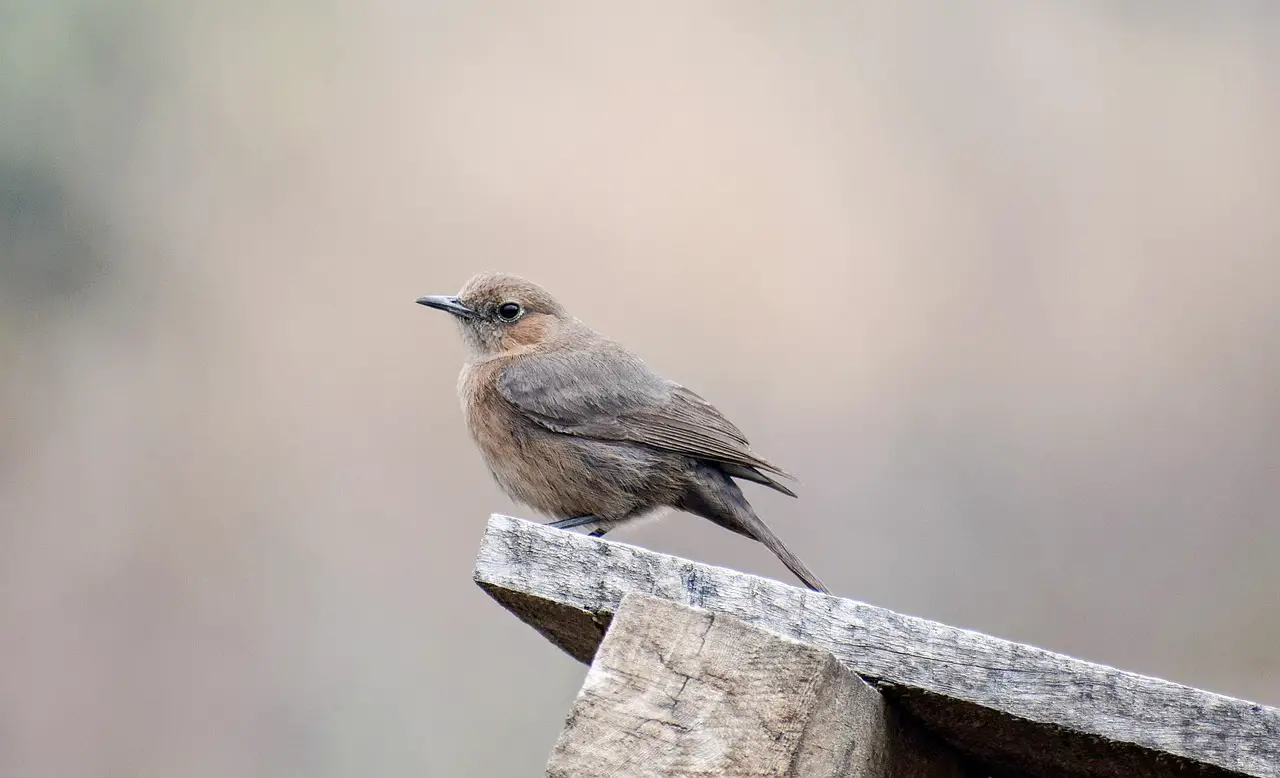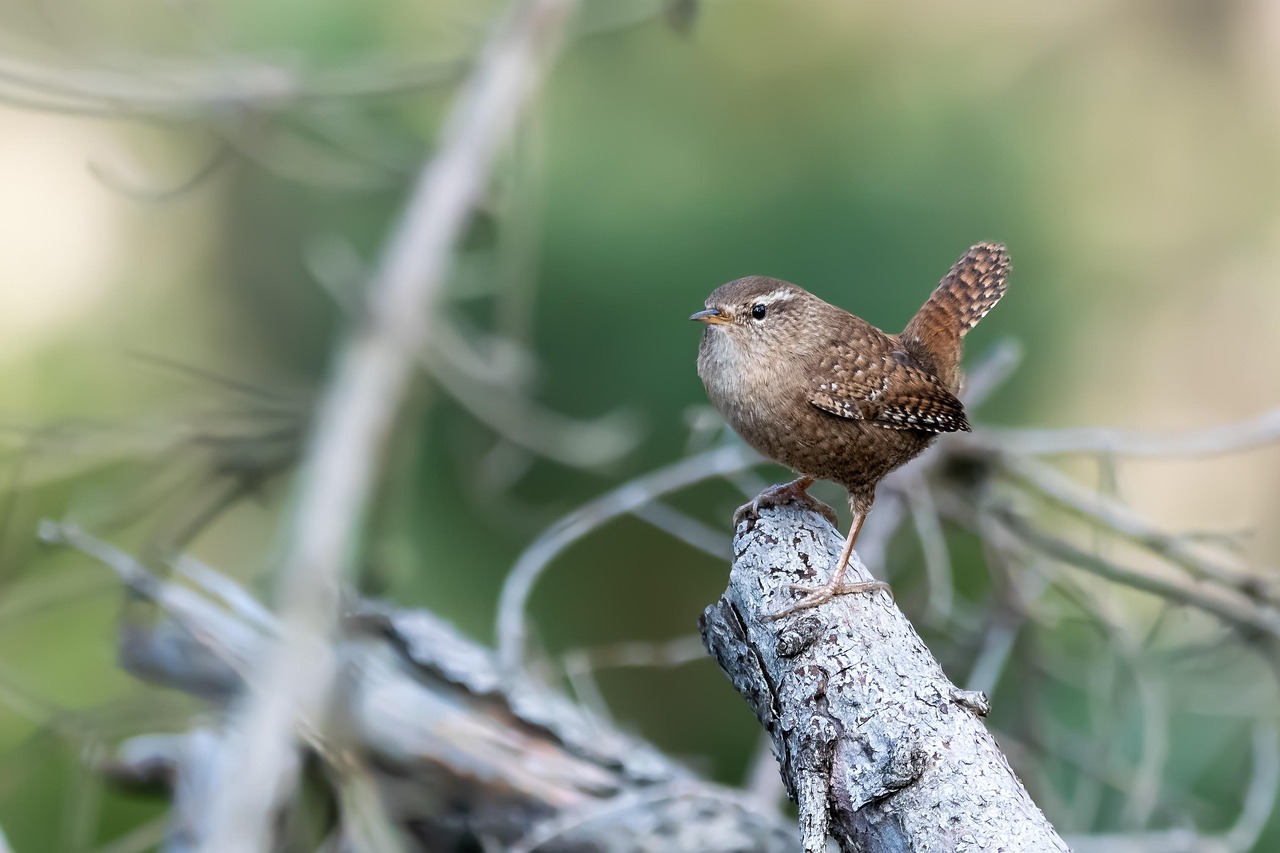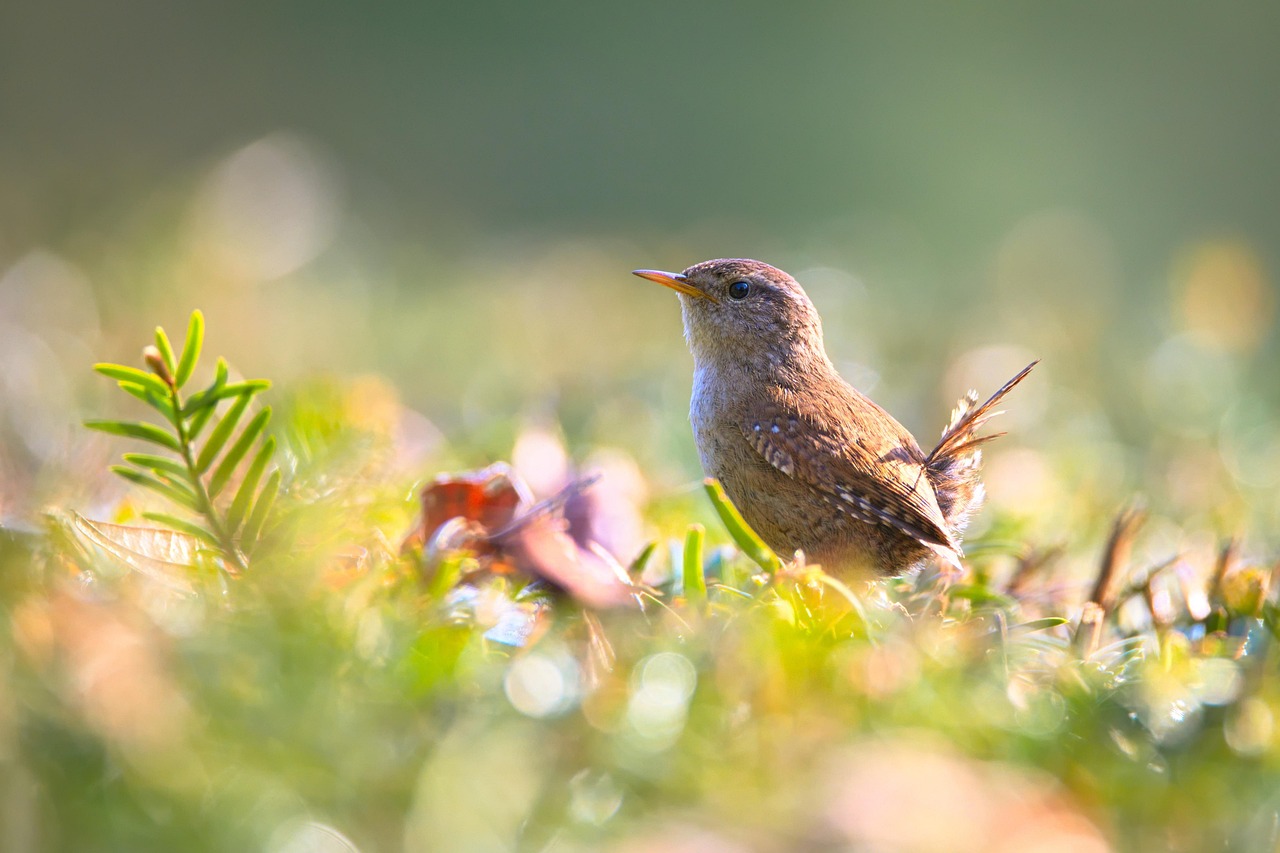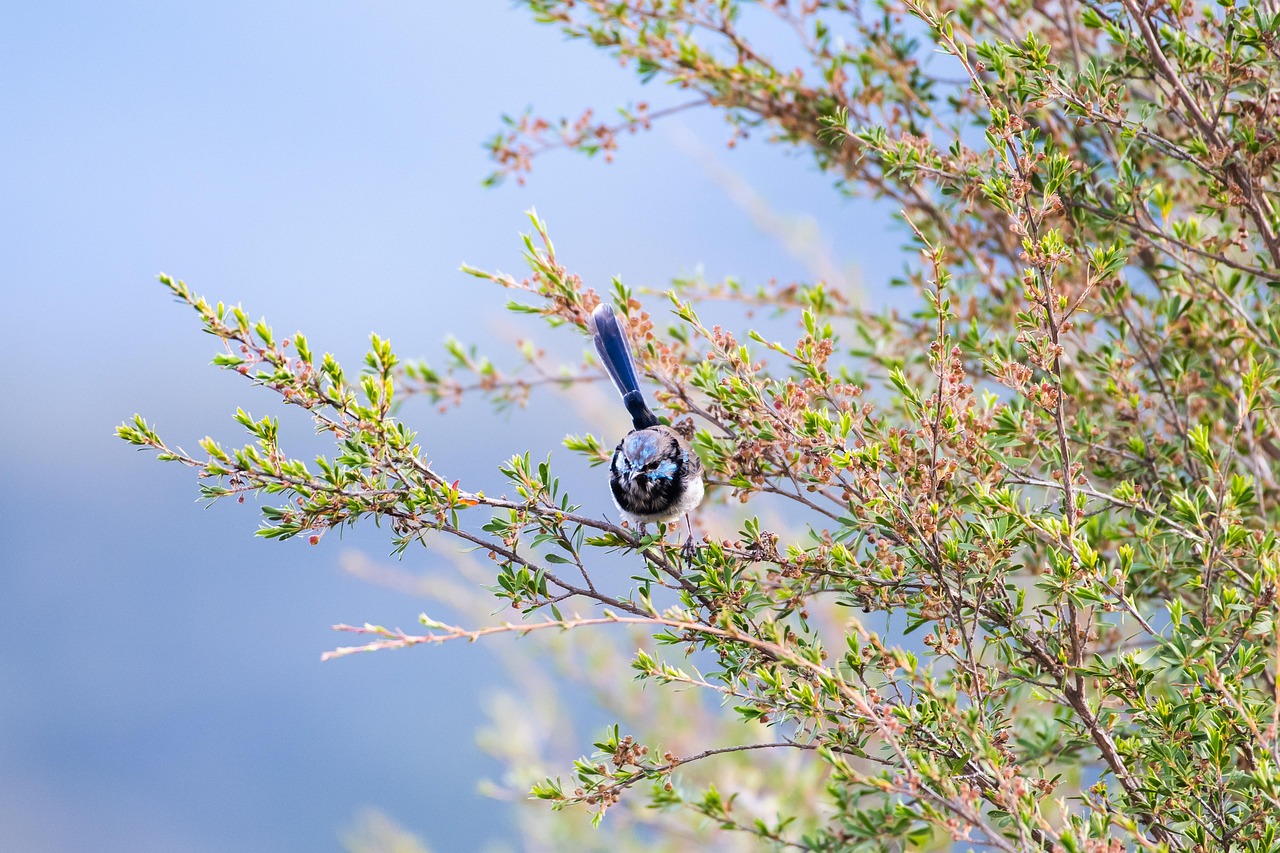Wren and sparrow are often confused due to their small size and similar habitats. However, key differences lie in their physical characteristics, songs, and behaviors. Wrens tend to have a more elongated body and a distinctive tail that is often held upright, while sparrows exhibit a more stout build and typically have a rounded tail.
Introduction to Wrens and Sparrows

Wrens and sparrows are two groups of birds that frequently inhabit gardens, parks, and woodlands. Their presence adds life and vibrancy to these areas. Both belong to different families, which contributes to their unique traits and behaviors. Understanding the distinctions between them can enhance birdwatching experiences and foster a deeper appreciation for avian diversity.
Wrens are part of the Troglodytidae family. They are known for their energetic behavior, often hopping around in dense vegetation and creating lively songs that can be heard throughout the day. There are approximately 88 species of wrens, each exhibiting distinct characteristics but sharing common traits such as their lively disposition and intricate nesting habits.
Sparrows, on the other hand, belong to the Passeridae family. This family includes a variety of species, with the house sparrow being one of the most recognizable. Sparrows are usually more social than wrens, often seen foraging in groups. Their songs are less complex than those of wrens but are still charming in their own right.
Physical Characteristics
When it comes to identifying wrens and sparrows, physical characteristics play a significant role. Although both birds are small, their shapes and features can help distinguish them from one another.
| Feature | Wren | Sparrow |
|---|---|---|
| Body Shape | Elongated with a pointed tail | Stout with a rounded tail |
| Size | Generally smaller (4-5 inches) | Slightly larger (5-7 inches) |
| Coloration | Brown with streaks | Brown with a mix of gray |
The table above summarizes some of the primary physical differences between wrens and sparrows. Wrens typically have a more delicate appearance compared to the robust build of sparrows. Their feathers often feature intricate patterns that help them blend into their surroundings.
Besides their body shape, the behavior of these birds also helps in identification. Wrens are known for their acrobatic movements, often seen flitting through shrubs and underbrush in search of insects. In contrast, sparrows prefer to forage on the ground or in open areas, scratching at the soil for seeds and insects.
Behavioral Differences
The behaviors exhibited by wrens and sparrows provide further insight into their differences. While both birds are known for their vocalizations, the complexity of their songs varies significantly.
Wrens are famed for their melodious and varied calls. Males often sing to establish territory and attract females. Their songs can be quite loud for such small birds and may consist of multiple notes and trills. In contrast, sparrows have simpler songs that may consist of short chirps or whistles.
Social behavior also differs between the two. Wrens are generally more solitary or found in pairs, particularly during breeding season. Sparrows tend to be more social, often forming flocks outside of the breeding season.
Understanding these behavioral traits can assist birdwatchers in identifying which species they are observing. Whether listening for a wren’s complex song or watching a flock of sparrows foraging together, each bird brings its unique charm to the environment.
Habitat Preferences
Habitat selection is an essential aspect of understanding the differences between wrens and sparrows. Both birds thrive in various environments, but their preferences can vary significantly. This section will explore the types of habitats each bird prefers and how these choices affect their behavior and lifestyle.
Wren Habitats
Wrens are known for their adaptability to different environments. They typically prefer areas with dense vegetation, which provides ample cover and foraging opportunities. Some common habitats for wrens include:
- Thickets and shrubs
- Woodlands and forests
- Overgrown gardens
- Wetlands and marshes
These environments allow wrens to build their nests in hidden locations, often among thick underbrush or within tree cavities. Their preference for dense cover aids in protection from predators while they search for insects and small invertebrates.
Sparrow Habitats
Sparrows, in contrast, are often found in more open environments. They tend to favor habitats that provide access to food sources while offering some shelter. Common habitats for sparrows include:
- Grasslands and fields
- Urban areas and gardens
- Agricultural lands
- Woodland edges
The adaptability of sparrows to urban settings allows them to thrive alongside human populations. They often forage on the ground, searching for seeds and insects. Sparrows are more likely to be seen in flocks, particularly in open spaces where they can easily spot predators.
Dietary Differences
The dietary habits of wrens and sparrows also reflect their habitat preferences and foraging behaviors. Understanding what each bird eats can provide further insight into their ecological roles.
Wren Diet
Wrens primarily feed on a diet rich in protein, which includes:
- Insects (such as beetles and caterpillars)
- Spiders
- Small invertebrates
- Seeds and berries (occasionally)
These birds are skilled foragers, often probing into crevices and under leaves to find food. Their hunting techniques are agile, allowing them to capture prey effectively in dense vegetation.
Sparrow Diet
Sparrows have a more varied diet that often includes:
- Seeds (grass seeds, grains, and weeds)
- Buds and leaves
- Insects (especially during breeding season)
- Fruits (in some species)
Sparrows are opportunistic feeders, adapting their diet based on the season and available food sources. This flexibility allows them to thrive in diverse environments, especially around human habitation where food is readily available.
Nesting Behaviors
Nesting behaviors are another crucial aspect that differentiates wrens from sparrows. The way each bird constructs and cares for its nest reflects its unique adaptations.
Wren Nesting
Wrens are known for their elaborate nesting habits. They often build their nests in concealed locations to protect them from predators. Key points about wren nesting include:
- Nests are typically made from twigs, grass, leaves, and feathers.
- Wrens may use multiple materials to create a cozy interior.
- They often build nests in tree branches, shrubs, or even human-made structures like birdhouses.
Males usually take the lead in nest building, showcasing their strength to attract females. Some species may build several nests within their territory.
Sparrow Nesting
Sparrows have a simpler nesting strategy compared to wrens. Their nests are generally less elaborate but still effective. Important aspects of sparrow nesting include:
- Nests are typically constructed from grass, twigs, and other plant materials.
- Sparrows often build their nests in shrubs, trees, or on building ledges.
- They may reuse old nests or modify existing ones for new broods.
The nesting habits of sparrows reflect their social nature, as they often nest in colonies, providing safety in numbers.

Breeding and Reproductive Behaviors

The breeding and reproductive behaviors of wrens and sparrows are crucial for understanding their life cycles and population dynamics. These behaviors not only ensure the survival of their species but also reflect their adaptability to different environments.
Wren Breeding Behavior
Wrens typically breed once or twice a year, depending on the species and environmental conditions. Their courtship rituals are elaborate and often involve:
- Males singing loudly to attract females and establish territory.
- Performing display flights, where they flutter above their territory.
- Building multiple nests to entice a mate, showcasing their nesting skills.
Once a female selects a mate, she usually collaborates with him in the final stages of nest building. After laying eggs, which can number between three to eight, the female primarily incubates them for about 12 to 16 days. The male assists by bringing food during this time.
Sparrow Breeding Behavior
Sparrows also engage in distinct breeding behaviors, with some similarities to wrens but notable differences. Their breeding patterns include:
- Establishing pair bonds through simpler songs and displays.
- Nesting in close proximity to other pairs, leading to colony-like breeding grounds.
- Laying clutches of three to six eggs, which the female incubates for about 10 to 14 days.
After hatching, both parents typically share the responsibility of feeding the chicks. This cooperative breeding strategy helps increase the survival rate of the young.
Vocalizations and Communication
Vocalizations are a significant aspect of communication for both wrens and sparrows. Each bird uses its voice to convey messages related to territory, mating, and alarm signals. Understanding these vocalizations can enhance birdwatching experiences.
Wren Vocalizations
Wrens are known for their complex and varied songs. Key features of wren vocalizations include:
- Rich melodies with multiple notes, often characterized by trills and rapid sequences.
- Males singing at dawn or dusk to establish territory and attract females.
- Different species have unique songs, making it possible to identify them by ear.
This ability to produce intricate songs is not just for attracting mates but also serves as a means of communication among males to ward off intruders from their territory.
Sparrow Vocalizations
Sparrows have simpler vocalizations compared to wrens. Their calls and songs typically include:
- Short chirps or whistles that convey basic messages.
- Alarm calls that alert other sparrows of potential threats.
- Songs that vary slightly between species but generally lack the complexity found in wren songs.
While sparrow songs may be less intricate, they are essential for maintaining social bonds within flocks and ensuring group cohesion during foraging activities.
Conservation Status and Threats
Both wrens and sparrows face various conservation challenges. Understanding these threats is important for their protection and preservation. The following section explores the conservation status of these birds in detail.
Wren Conservation Status
The conservation status of wrens varies by species. Some species are abundant, while others may be threatened or endangered due to habitat loss and environmental changes. Key threats include:
- Loss of habitat due to urban development and agricultural expansion.
- Climate change affecting food availability and nesting sites.
- Predation from domestic cats and invasive species.
Conservation efforts are underway for many wren species, focusing on habitat restoration and protection measures to ensure their survival.
Sparrow Conservation Status
Sparrows also experience significant conservation challenges. While some species are common, others have seen dramatic declines in population. Major threats include:
- Habitat destruction caused by urbanization and agricultural practices.
- Pesticide use leading to reduced food availability.
- Climate change impacting migration patterns and breeding success.
Many conservation organizations are actively working to monitor sparrow populations and implement strategies to mitigate these threats, aiming to stabilize their numbers in the wild.
Ecological Importance of Wrens and Sparrows

Both wrens and sparrows play vital roles in their ecosystems. Their presence contributes to the balance of nature by helping to control insect populations and dispersing seeds. This section delves into their ecological importance and how they interact with their environments.
Wrens’ Ecological Role
Wrens are primarily insectivorous, which means they help keep insect populations in check. Some key aspects of their ecological role include:
- Insect Control: By feeding on a variety of insects, wrens help reduce pest populations that could otherwise damage crops and plants.
- Seed Dispersal: While primarily insect eaters, wrens also consume seeds and berries, contributing to seed dispersal, which aids in plant propagation.
- Nest Builders: Their nesting behaviors influence local flora. When they build nests, they often use materials from their surroundings, which can impact plant growth and biodiversity.
The energetic and vocal nature of wrens also adds to the auditory landscape of their habitats, creating a vibrant atmosphere that supports various other species.
Sparrows’ Ecological Role
Sparrows contribute significantly to their environments, especially in terms of foraging behavior. Their ecological roles include:
- Seed Dispersal: As granivores, sparrows primarily feed on seeds, playing a crucial role in seed dispersal, which promotes plant diversity and growth.
- Food Source: Sparrows serve as prey for various predators, including hawks and cats, thus supporting the food web.
- Habitat Indicators: The presence and health of sparrow populations can indicate the overall health of an ecosystem, as they respond quickly to environmental changes.
Their social behavior and ability to thrive in different habitats make sparrows essential components of urban and rural ecosystems alike.
Birdwatching and Observation Tips
For those interested in observing wrens and sparrows, understanding their behaviors and habitats is crucial for successful birdwatching experiences. Here are some tips to enhance your observation:
Tips for Observing Wrens
- Listen: Pay attention to their melodious songs, especially during the early morning or late afternoon when they are most vocal.
- Look for Movement: Wrens are often found flitting through dense vegetation. Look for quick movements in shrubs and thickets.
- Use Binoculars: A good pair of binoculars can help you spot these small birds without disturbing them.
Tips for Observing Sparrows
- Watch for Flocks: Sparrows often forage in groups. Look for them in open fields or near feeders.
- Identify Calls: Familiarize yourself with their simple chirps and whistles to recognize them by sound.
- Be Patient: Sparrows may take time to approach food sources. Sit quietly in one spot for the best chances of observation.
Both wrens and sparrows offer delightful opportunities for birdwatching enthusiasts. Understanding their behaviors and habitats can greatly enhance the experience.
Final Thoughts
The differences between wrens and sparrows extend beyond mere physical appearances. Each bird plays a unique role in its ecosystem while showcasing distinct behaviors, vocalizations, and nesting strategies. Wrens are characterized by their intricate songs and preference for dense vegetation, whereas sparrows exhibit social behavior and adaptability to urban environments.
As both groups of birds face significant conservation challenges due to habitat loss and environmental changes, awareness and appreciation of their ecological roles are crucial. By understanding these birds better, we can contribute to their conservation efforts and foster a greater appreciation for the diversity of avian life.
Whether you are a seasoned birdwatcher or a casual observer, exploring the lives of wrens and sparrows can enrich your connection with nature. Their presence in our environments serves as a reminder of the beauty and complexity of wildlife that surrounds us.
